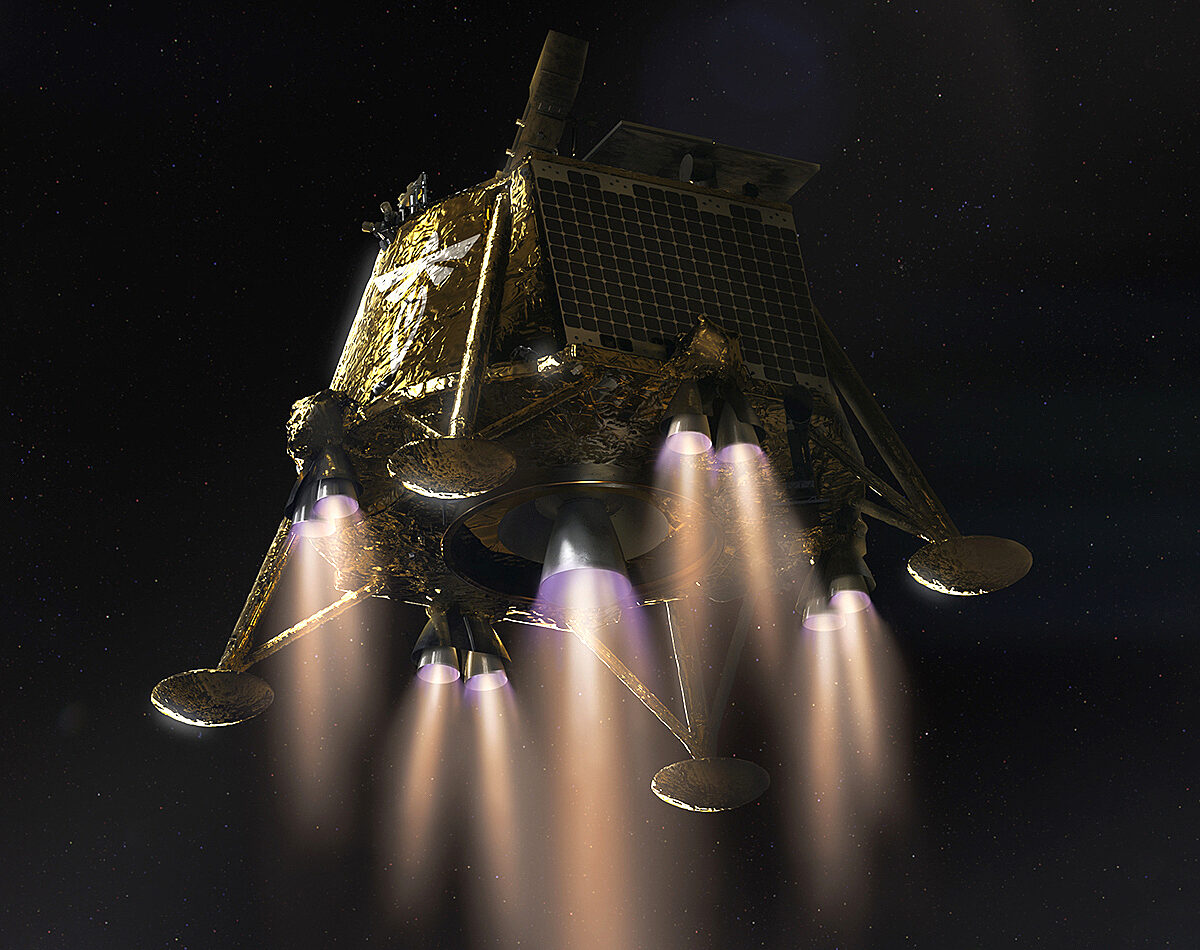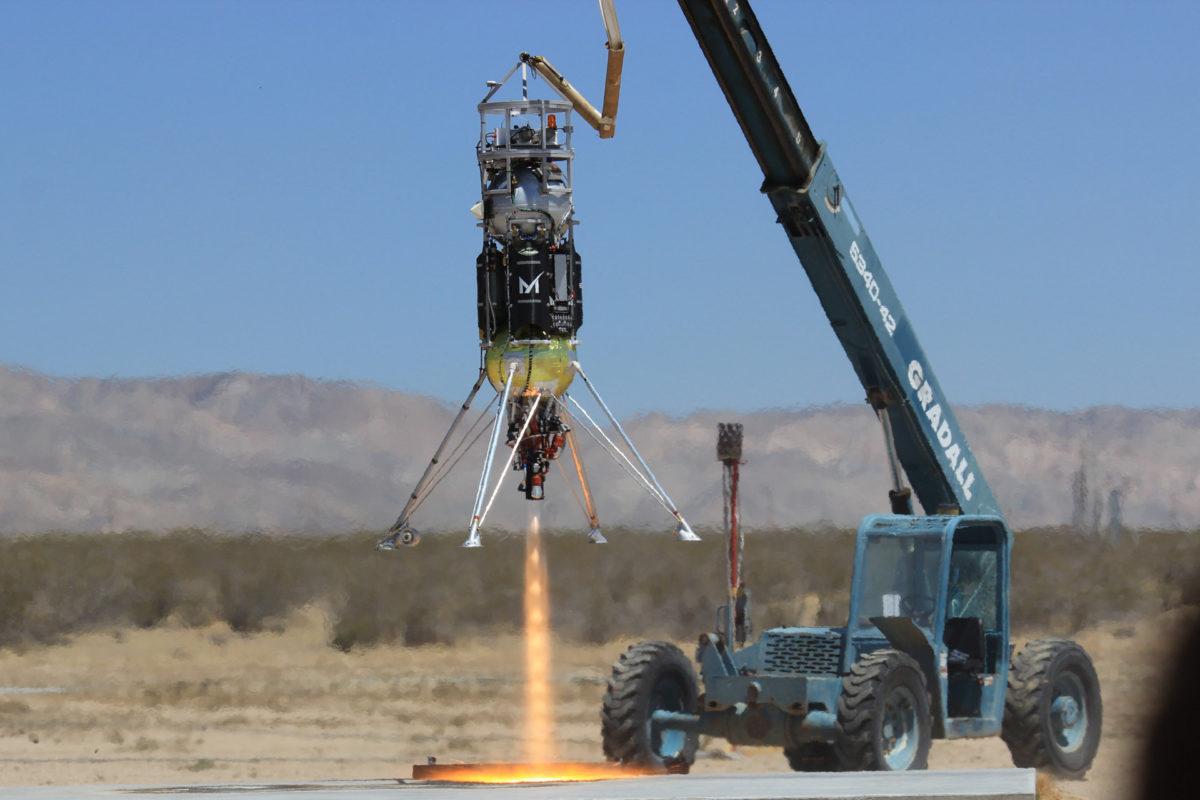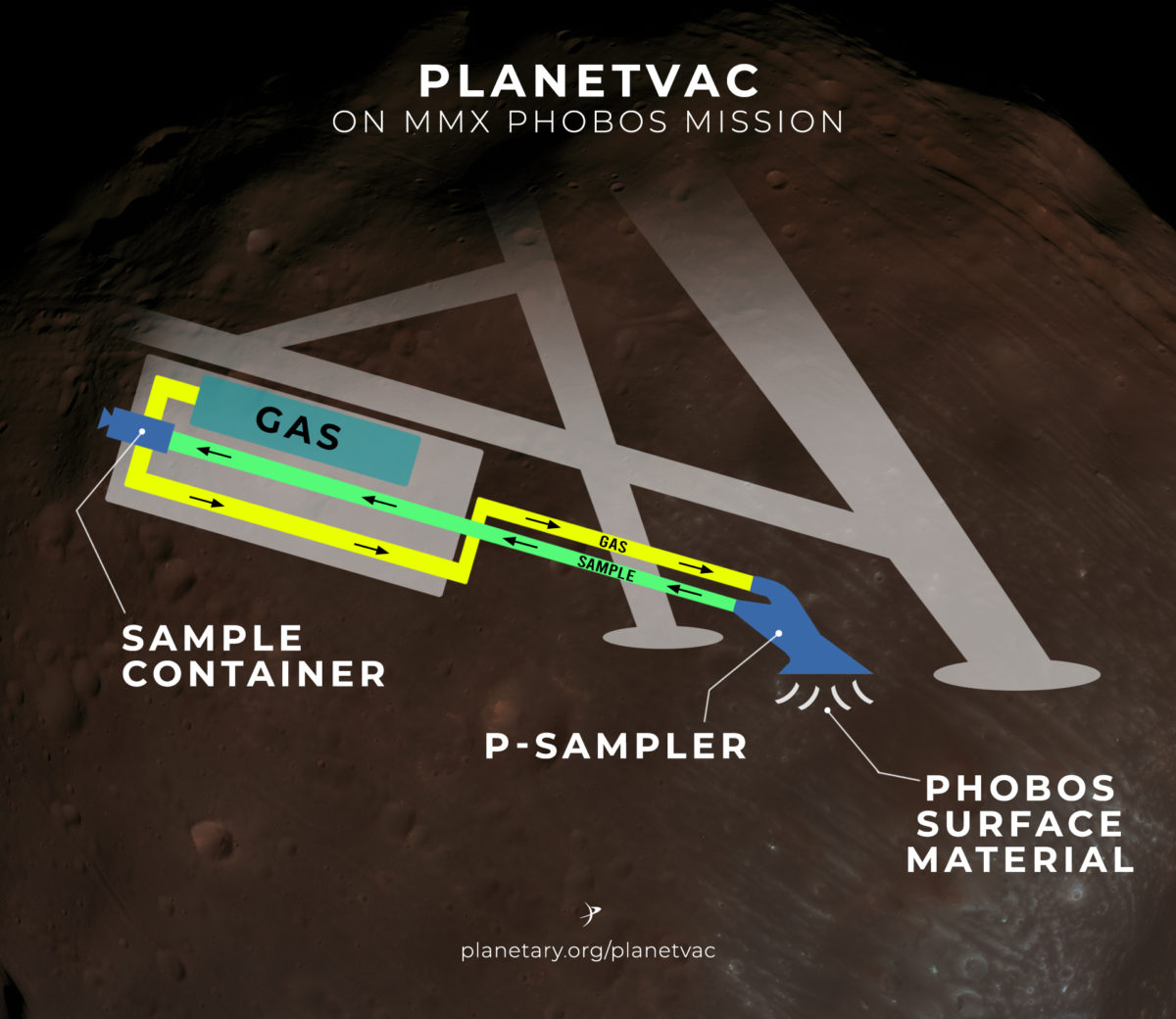Asa Stahl • Dec 12, 2024
Tech funded by Planetary Society launches to the Moon next month
When the “Ghost Riders in the Sky” mission launches to the Moon next month, it will carry with it something that could one day transform space exploration: a lunar dustbuster.
It’s called Lunar PlanetVac, and it looks like little more than an extra lander leg on Firefly Aerospace’s Blue Ghost spacecraft. But PlanetVac could boost discoveries throughout the Solar System by revolutionizing how we collect pieces of other worlds. Now — thanks in part to The Planetary Society — it is set to fly to both the Moon and Mars. These missions mark one of the first times that a non-profit, powered by regular people without any help from a government or university, helped develop a space exploration technology that lands on another world.

“The biggest issue in planetary exploration”
Taking samples is one of the most valuable things a space probe can do. A lander that picks up a piece of another planet can study it more closely, use it for resources, or bring it back to Earth. Specimens like this have changed what we know about our place in the Universe: rocks brought back by the Apollo missions taught us that the Moon likely formed from a giant impact with Earth, and pieces of asteroids have shown us that they could have supplied much of Earth’s water. As you read this, there are samples waiting to be brought back from Mars that might reveal whether the red planet has ever been hospitable to life.
But sampling is hard to pull off. Spacecraft have made it all the way to Venus and the Moon, landed, and then failed at this step.
“Orbiters, remote sensing — that’s easy stuff,” said Kris Zacny, who led the development of PlanetVac as a senior research scientist and vice president at Honeybee Robotics. “The biggest issue in planetary exploration is actually getting a sample.”

Today, many sampling missions rely on what is essentially a robotic arm. These systems tend to be complicated and have to be designed almost perfectly to make sure they work on other worlds. That in turn makes sample missions more expensive and potentially risky, which is part of why they’re so rare: more than 70 robotic missions have been sent to the Moon, for example, but fewer than 10 have picked anything up.
The power of PlanetVac
PlanetVac is designed to simplify this process, making sample missions cheaper, easier, and hopefully more common. The trick is that instead of reaching out and grabbing rocks and dirt, PlanetVac “sucks” material up into the spacecraft.
“If we deal with dust on Earth, we use vacuum cleaners,” Zacny joked, “so why not use vacuum cleaners on Mars?”
Technically, PlanetVac doesn’t suck — it blows. With the instrument settled on or near the ground, it blasts out gas in just the right way to stir material up through its opening and into a collection chamber.

The result is lightweight, low-cost, and efficient. Unlike a robotic arm, which can only work if it’s fitted onto a lander in certain places, PlanetVac can be attached almost anywhere. It draws less power than traditional systems, and it’s less likely to fail because it has almost no moving parts. PlanetVac can also work on many different kinds of worlds regardless of gravity or a planet’s rocky makeup.
Robotic arms will still be more useful in some situations. PlanetVac isn’t designed for large rocks, for example, and it can’t drill, scrape, or select a particular sampling site if it’s on a lander that can’t move. But for many kinds of science — and especially for missions where reliability matters most — PlanetVac could be a game-changer.
The Planetary Society’s role
Launching PlanetVac on the Blue Ghost lander will be a huge step toward its wider use throughout the Solar System. But if it weren’t for The Planetary Society’s help on two separate, crucial occasions, PlanetVac might not be headed for the Moon next month.

The first turning point came in 2013. At that time, Honeybee Robotics had only tested parts of PlanetVac, and while NASA had partially funded the project, there weren’t enough resources to build a full prototype.
The Planetary Society took notice. As part of our mission of advancing space science and exploration, we find and support innovative science and technology projects — and according to Bruce Betts, chief scientist at The Planetary Society, PlanetVac immediately stood out as a candidate. It was practical, it had a chance of flying in the very near future, and it needed help.
“There was a way we could make a real difference,” Betts said.
Our members pitched in to fund PlanetVac’s first complete prototype and a lab test in simulated Mars conditions. The prototype was a success, and NASA soon awarded HoneyBee Robotics another grant. This time, they would demonstrate that PlanetVac could work on an actual rocket.
PlanetVac Testing on Xodiac Rocket In 2018, Planetary Society members and supporters helped fund a test of the PlanetVac sample collection technology aboard a rocket called Xodiac. Xodiac, built by Masten Space Systems, takes off and lands vertically in California's Mojave Desert, allowing hardware developers to simulate the stresses of a rocket launch and landing. PlanetVac was attached to the rocket’s leg and successfully collected 332 grams of simulated Martian soil.
Again, funding from Planetary Society members pushed this test to the finish line. PlanetVac launched from the Mojave Air and Space Port, touched down in Mars-like soil, and successfully collected three times more rocks than its original goal. The flight proved that PlanetVac could survive real mission conditions, making it much more likely to launch in the future.
The future of PlanetVac
Now, PlanetVac is finally lifting off. In 2025, the instrument will launch on Blue Ghost, a private lunar lander built by Firefly Aerospace and funded by NASA as part of the agency’s Commercial Lunar Payload Services program. Though the mission won’t bring back any samples, it will provide the first true demonstration of PlanetVac in space.An onboard laser and camera will each check that PlanetVac successfully brought samples into the lander. Then, the lunar soil that PlanetVac collected will be sorted into bits of different sizes, just as a future mission might do before taking scientific measurements.
PlanetVac is also set to fly beyond the Moon. A version of the tool called “P Sampler” will play a key role in the Martian Moons eXploration (MMX) mission to bring back samples from Phobos, a moon of Mars. The spacecraft will also use a second sampling system based on a more traditional robotic arm. But since we don’t quite know what the surface of Phobos is like, the Japanese Aerospace Exploration Agency (JAXA), which operates the mission, is relying on P Sampler’s flexibility to ensure that the spacecraft will collect samples no matter what.

These two missions alone make PlanetVac one of The Planetary Society’s most successful science and technology programs — and that’s saying something. Our members have funded radio searches for intelligent alien life, supported surveys for Earth-like worlds around other stars, and helped develop micro-rovers and space drills. We launched our very own space mission, twice, to demonstrate solar sail technology. Our Science and Technology Empowered by the Public (STEP) grants are allowing scientists to better understand the possibility of life in salty alien oceans and how to grow plants on the Moon and Mars. And with the help of our Shoemaker NEO grants, everyday heroes around the world are discovering, tracking, and characterizing potentially dangerous near-Earth objects (NEOs).
But perhaps none of these projects has yielded such a huge return on investment as quickly as PlanetVac. Our members spent roughly $50,000 to help PlanetVac get to the launchpad. Now, a $400 million mission to bring back samples from a moon of Mars is being built around that same technology.
“This is an example of our members making space exploration happen,” Betts said. “With PlanetVac, they’ve made history.”
Support our core enterprises
Your support powers our mission to explore worlds, find life, and defend Earth. You make all the difference when you make a gift. Give today!
Donate

 Explore Worlds
Explore Worlds Find Life
Find Life Defend Earth
Defend Earth

